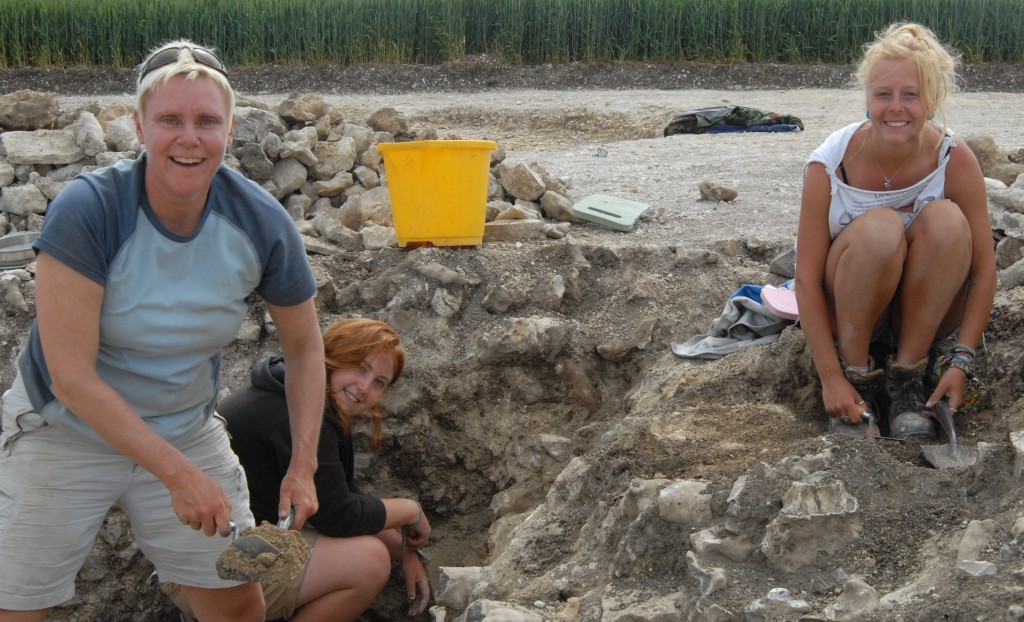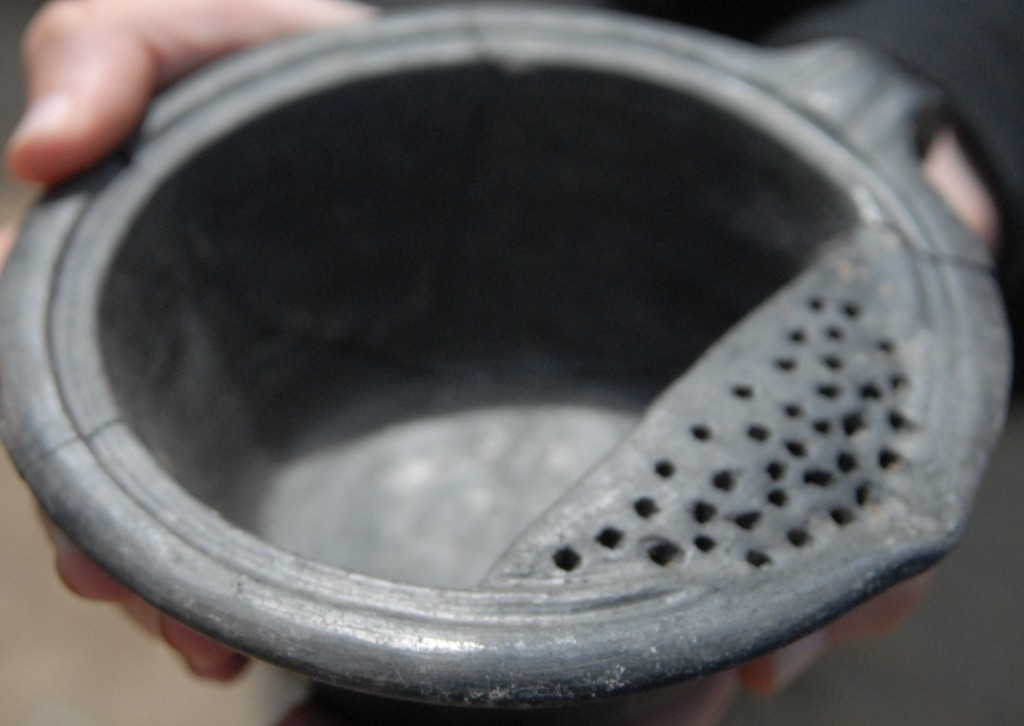Friday 28th June 2013
Day 23- The End is Here
Today was the official last day of the site and the whole site was packing up their stations, finishing features and getting as much done as possible. Of course on such a day, some of the most spectacular features and finds emerged from within the last hour! For example, the sub-rectangular feature, that was previously interpreted as a well, revealed layers of excrement. That might not sound the most interesting but often excrement can reveal the rarest of information, such as the details of the diet of the population, and if animal, perhaps may reveal the purpose of the feature. Due to this layer, it has been hypothesised that it may be a fertiliser pit to be used on the surrounding agricultural land. In addition, fairly close to the bottom, a stunning and almost intact Black Burnished Ware vessel was recovered by students Emily Rhodes and Shannon Harding.
Finds specialist and director Damian Evans says he has not seen anything parallel to it in terms of style and design! The diamond pattern on the vessel sides is typical of Early Black Burnished Ware production, but the swirl-like pattern on the vessel bottom is typical of late Black Burnished Ware. This may indicate that the ceramic was produced in a transition period between the two decoration styles. The purpose of this vessel is widely debated but the most strong argument has been for medicinal purposes with the strainer used to keep in plant matter.
One of the features on site has produced a mass amount of flint rubble but excavation down to the bottom layers by students Emily Nickerson, Tilly Cammegh and Christina revealed a flint rectangular structure interpreted as being a grain dryer. It was not until the last afternoon of this year’s excavation that it revealed painted wall plaster and a structure that is indicative of a Roman bathhouse! This is the structure that the excavation has been searching for to supplement the Roman Villa evidence!

Students Emily Nickerson, Tilly Cammegh and Christina working on the very recently revealed Roman bathhouse! Courtesy of Bournemouth University.
